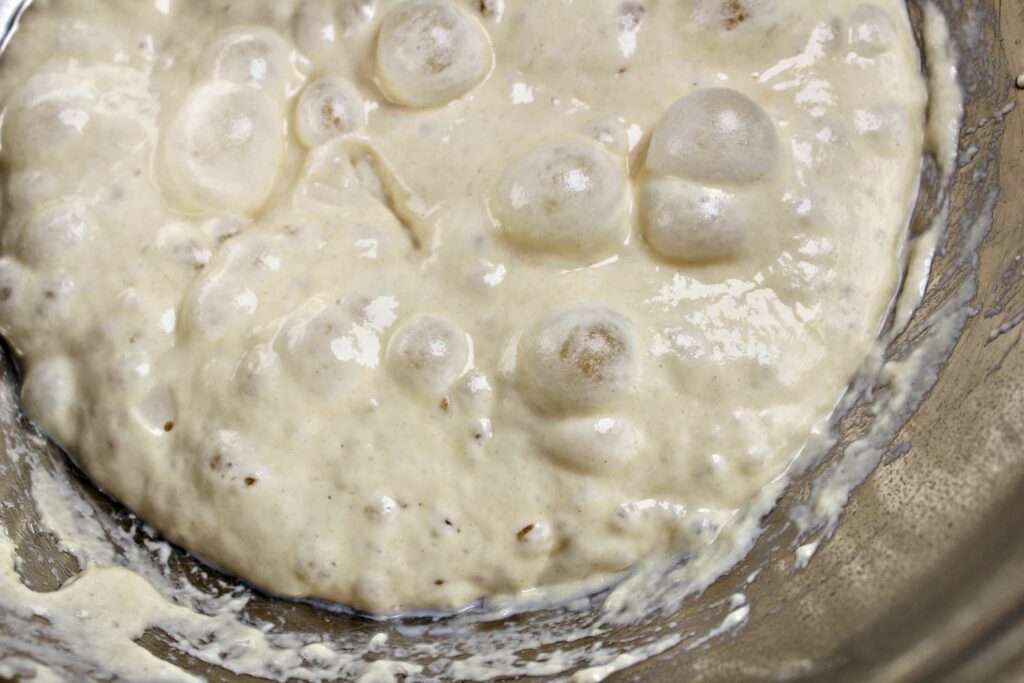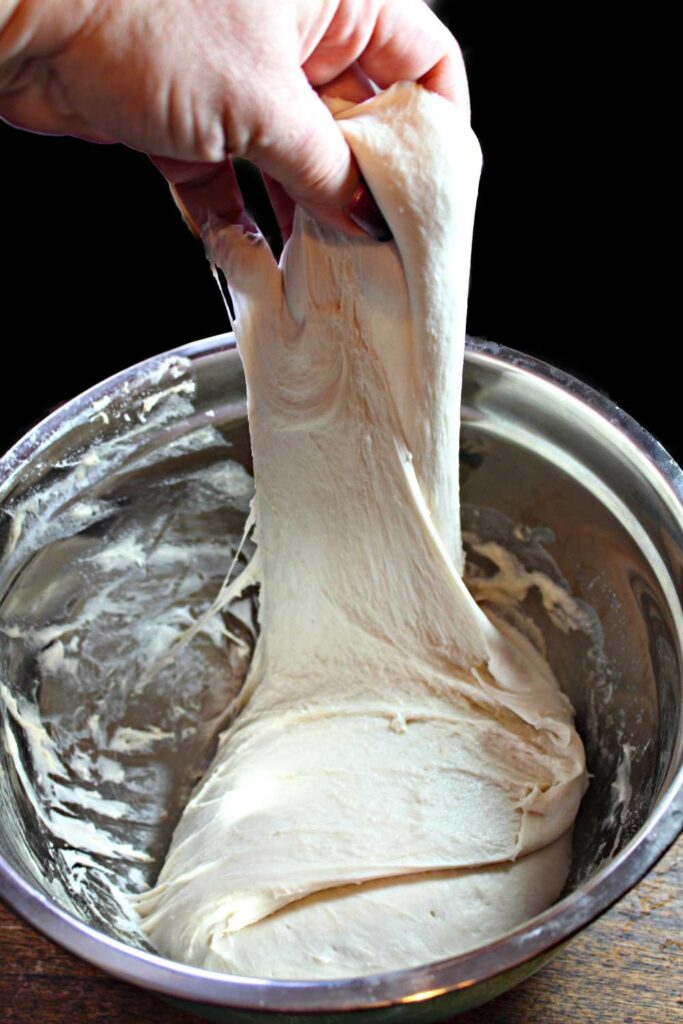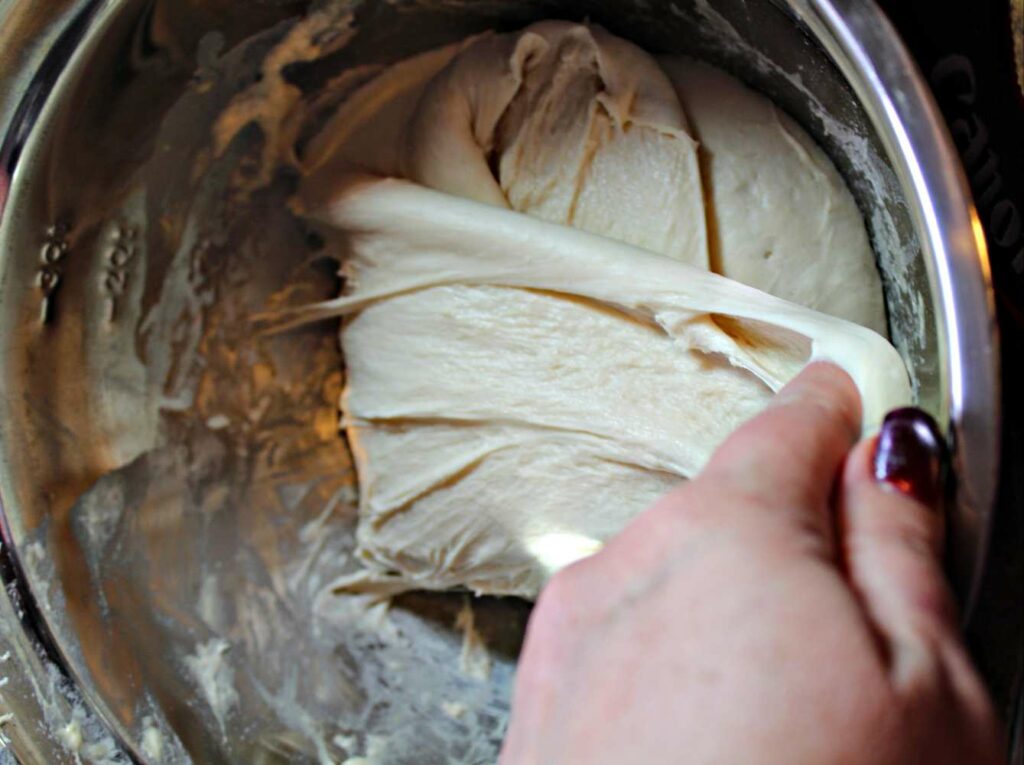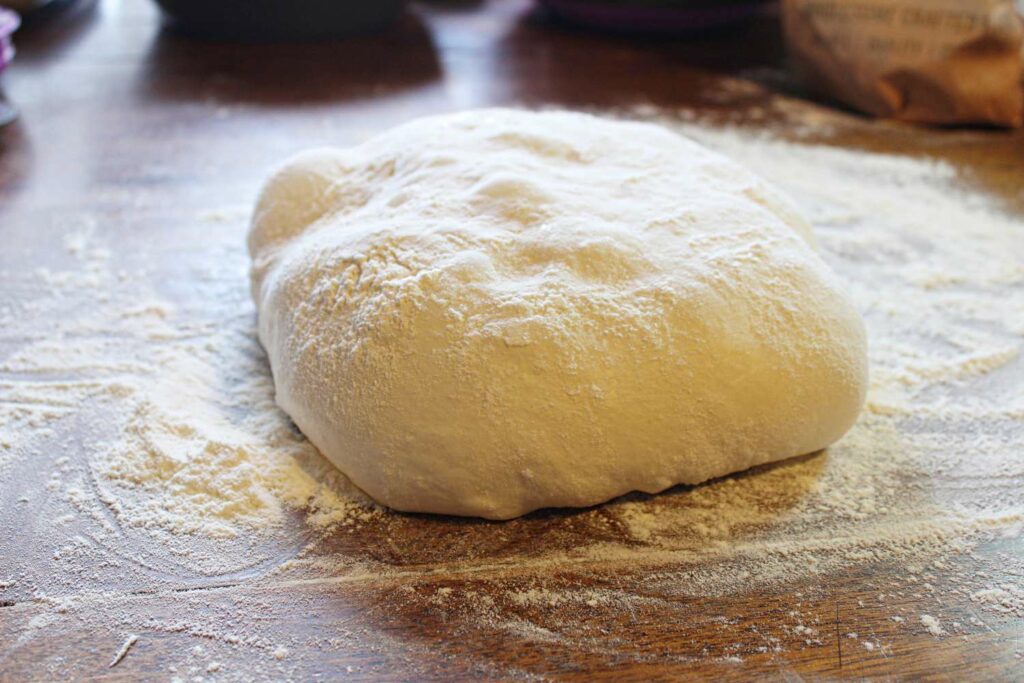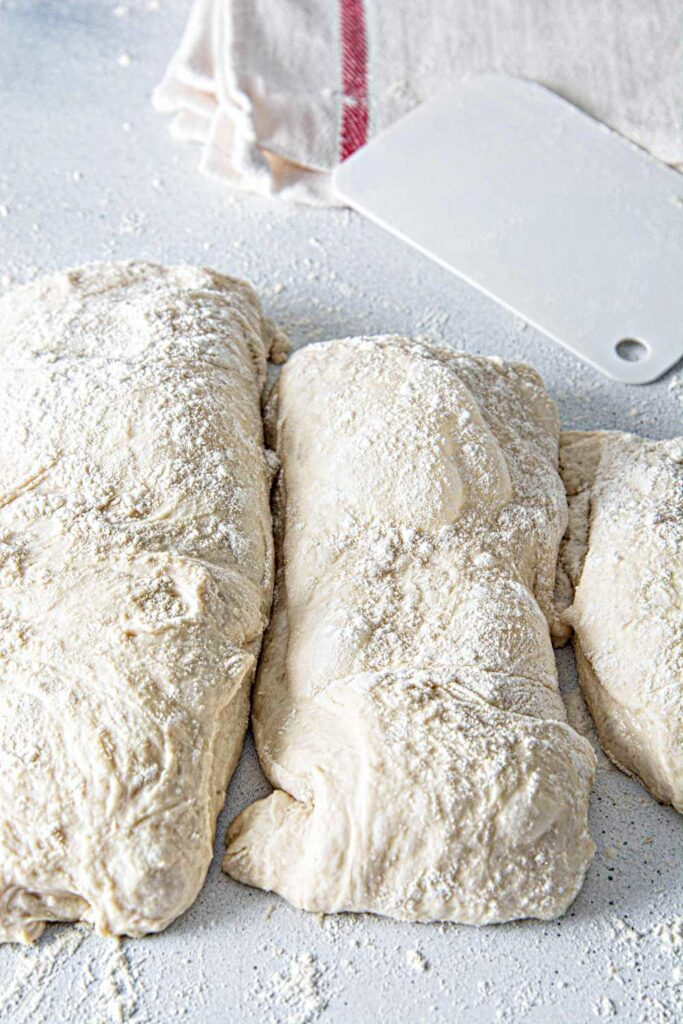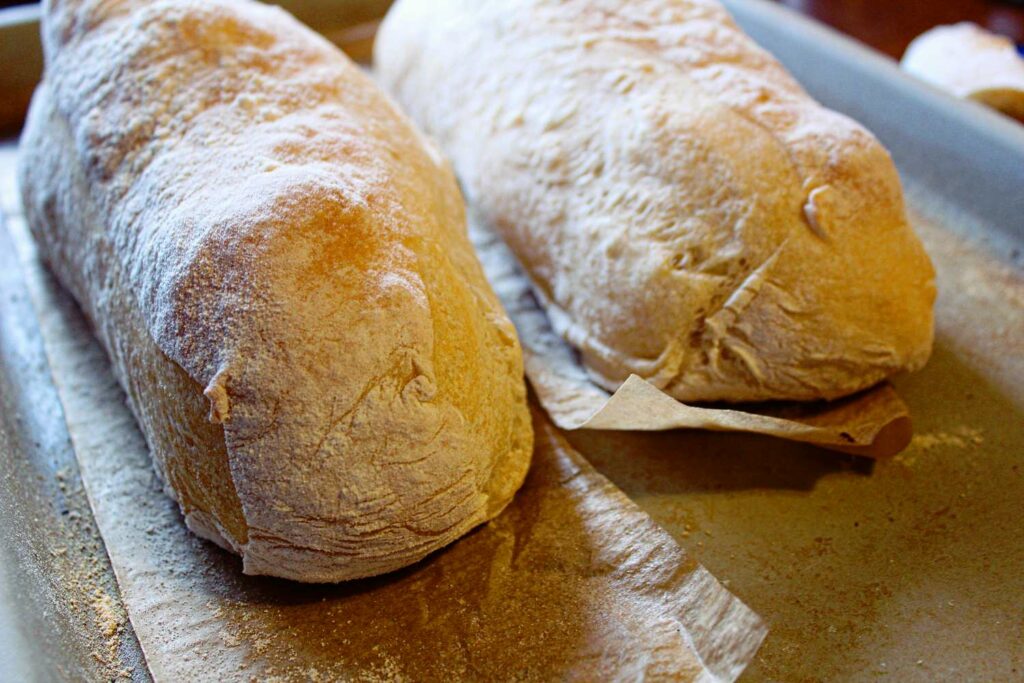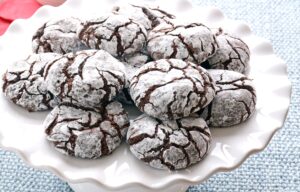


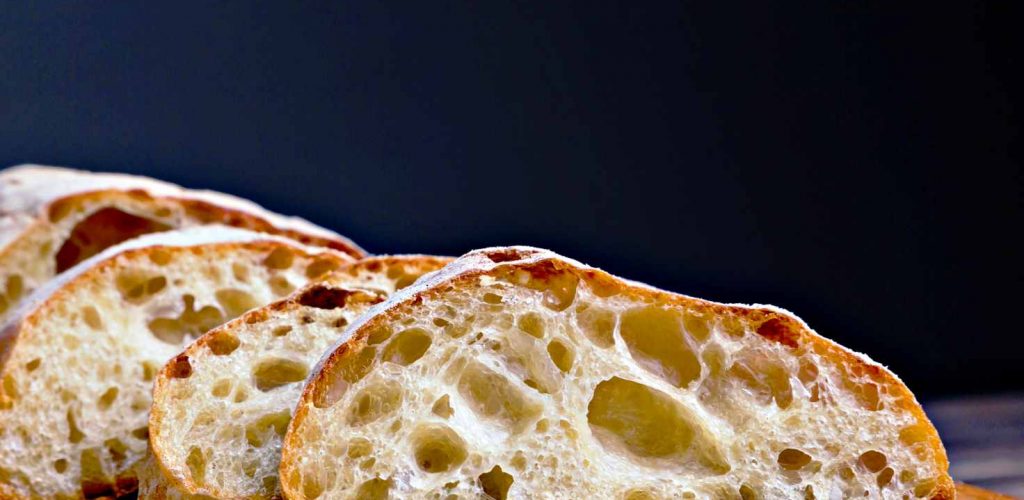
For this loaf, we use our KAMUT® All-purpose flour. It has a slightly higher protein content than others and is ideal for artisan bread like ciabatta. We start with a Biga, which is a sponge that is fermented for about 12 hours. We used milk in our biga. This milk adds richness and added depth of flavor. A combination of kneading and turning lent the dough just the right amount of gluten for the medium-size bubbles we were looking for in the perfect ciabatta recipe.
The dough for this bread is typically wet and very sticky. Work quickly and gently during the final loaf formation, as rough handling will result in squatty chewy loaves. We prefer using a large bowl scraper or spatula to move the dough. When moving with your hands, be sure you have floured them well. For proper gluten development in the dough, the use of an electric mixer is best. For baking, we suggest the use of a baking stone on the lower rack of the oven.
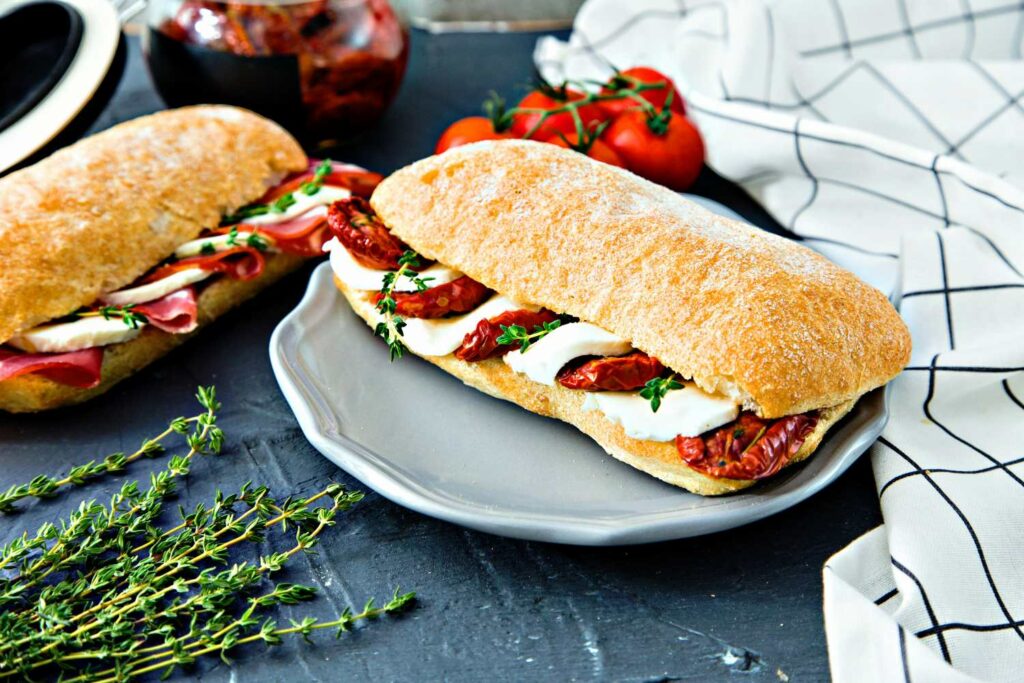
1 cup (4 ¼ oz. 120g) Panhandle Milling KAMUT® all-purpose flour
⅛ tsp. Red Star instant or rapid-rise yeast
½ cup (4 oz., 113g) milk
Dough
4 cups (1lb. 1oz., 480g) Panhandle Milling KAMUT® all-purpose flour
1 tsp. (3g) Red Star instant or rapid-rise yeast
2 tsp. (7g) table salt
1 ½ cup (12 oz., 340g) water, at room temperature
Directions:
